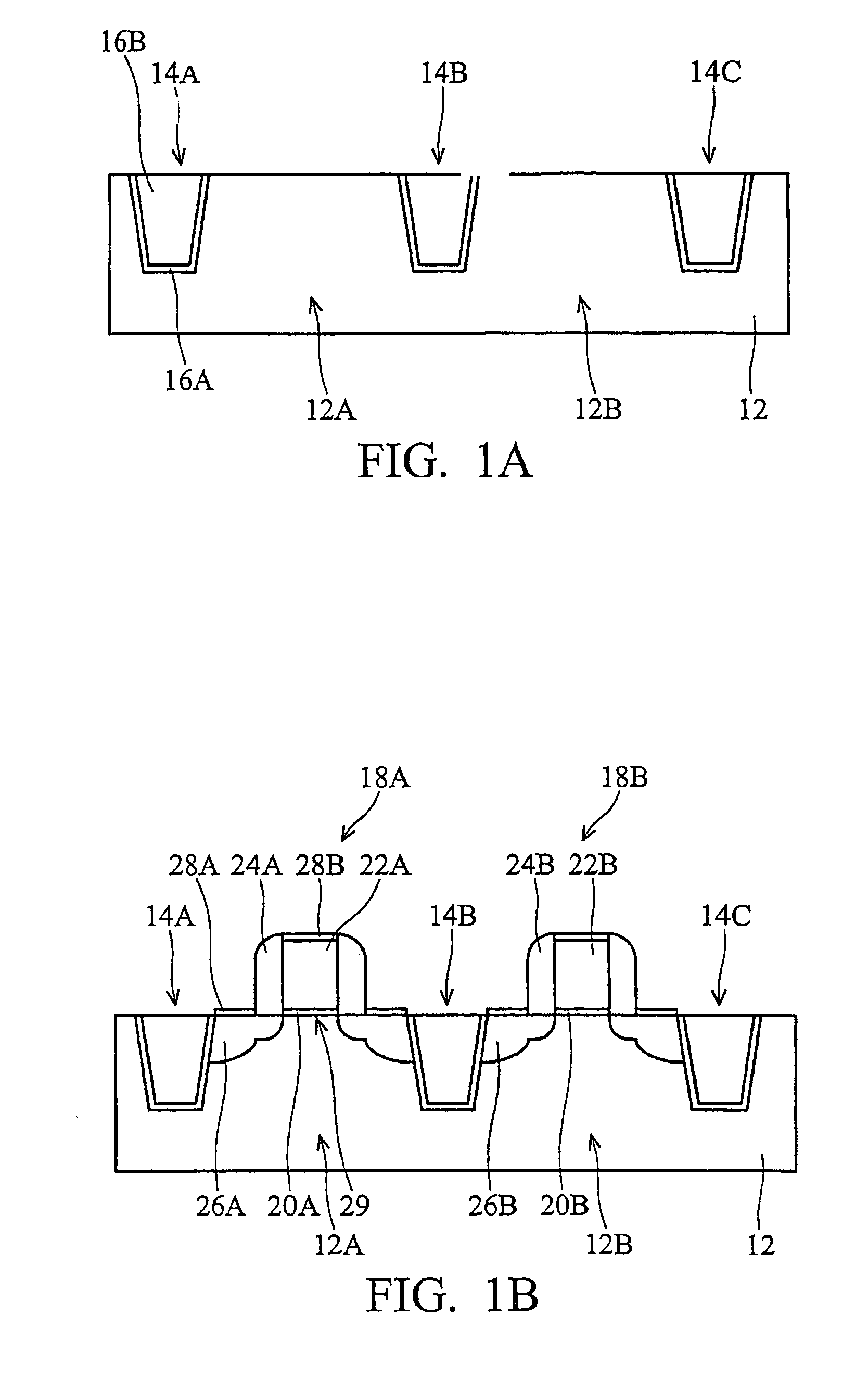High performance strained channel MOSFETs by coupled stress effects
a mosfet and coupled stress technology, applied in the direction of semiconductor/solid-state device manufacturing, semiconductor devices, electrical apparatus, etc., can solve the problems of inability to accept the trade-off between nmos and pmos performance, limited strain induced in the channel region, and inability to achieve the effect of improving the performance of nmos and pmos devices
- Summary
- Abstract
- Description
- Claims
- Application Information
AI Technical Summary
Benefits of technology
Problems solved by technology
Method used
Image
Examples
Embodiment Construction
[0017]Although the method of the present invention is explained with reference to exemplary NMOS and PMOS MOSFET devices, it will be appreciated that aspects of the present invention may be applied to the formation of any MOSFET device whereby a plurality of locally mechanically induced stresses in front-end-of-line (FEOL) processes are selectively coupled to produce an improved performance of both NMOS and PMOS devices including improved drive current (Idrive)
[0018]Referring to FIGS. 1A–1E in an exemplary process flow for forming the MOSFETS of the present invention, are shown cross-sectional schematic views of a portion of a semiconductor wafer at stages of an exemplary integrated circuit manufacturing process.
[0019]For example, referring to FIG. 1A, is shown a semiconductor substrate 12, which may include silicon, strained semiconductor, compound semiconductor, multi-layered semiconductors, or combinations thereof. For example, the substrate 12 may include, but is not limited to,...
PUM
 Login to View More
Login to View More Abstract
Description
Claims
Application Information
 Login to View More
Login to View More - R&D
- Intellectual Property
- Life Sciences
- Materials
- Tech Scout
- Unparalleled Data Quality
- Higher Quality Content
- 60% Fewer Hallucinations
Browse by: Latest US Patents, China's latest patents, Technical Efficacy Thesaurus, Application Domain, Technology Topic, Popular Technical Reports.
© 2025 PatSnap. All rights reserved.Legal|Privacy policy|Modern Slavery Act Transparency Statement|Sitemap|About US| Contact US: help@patsnap.com



